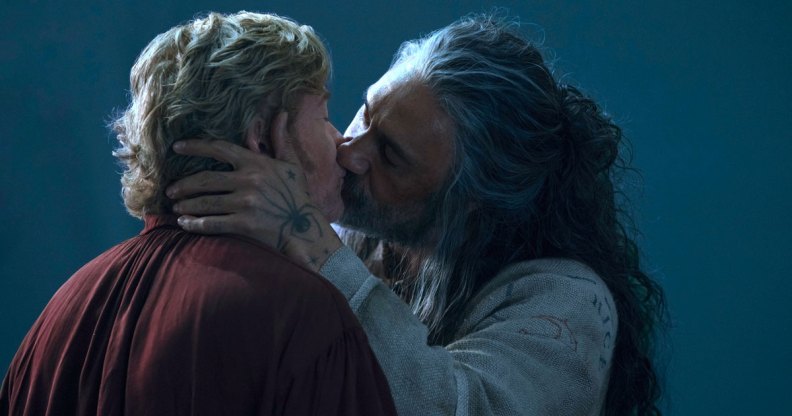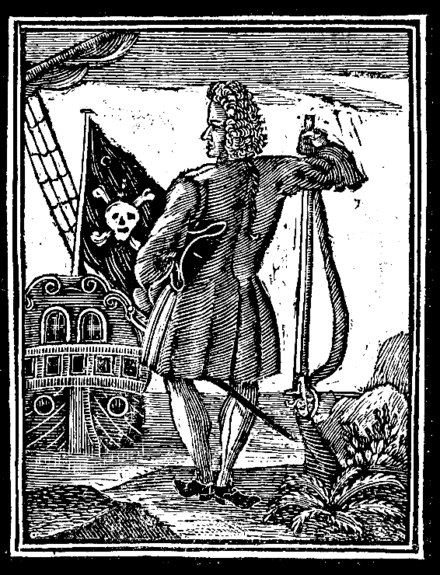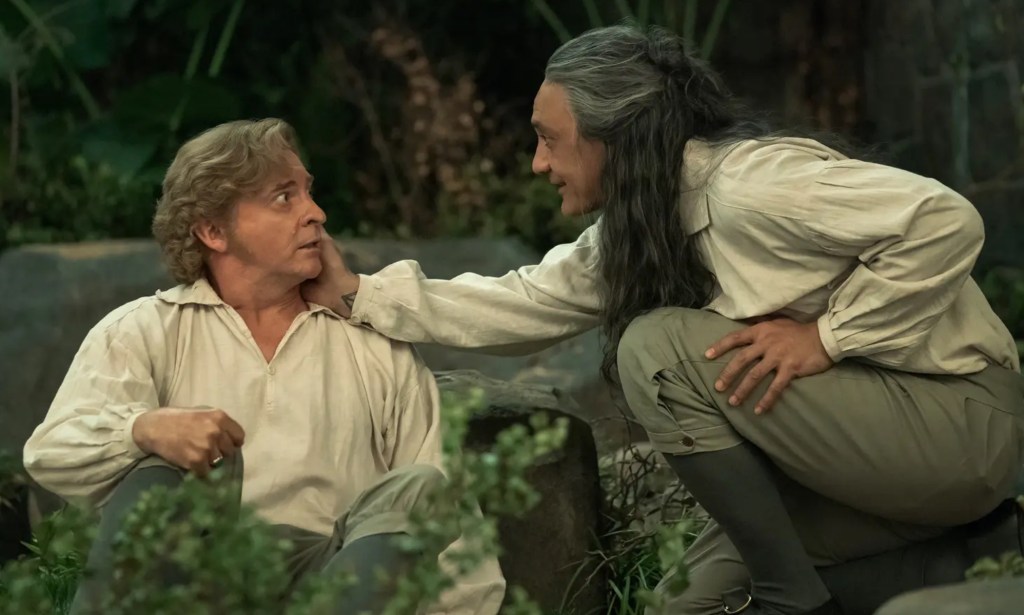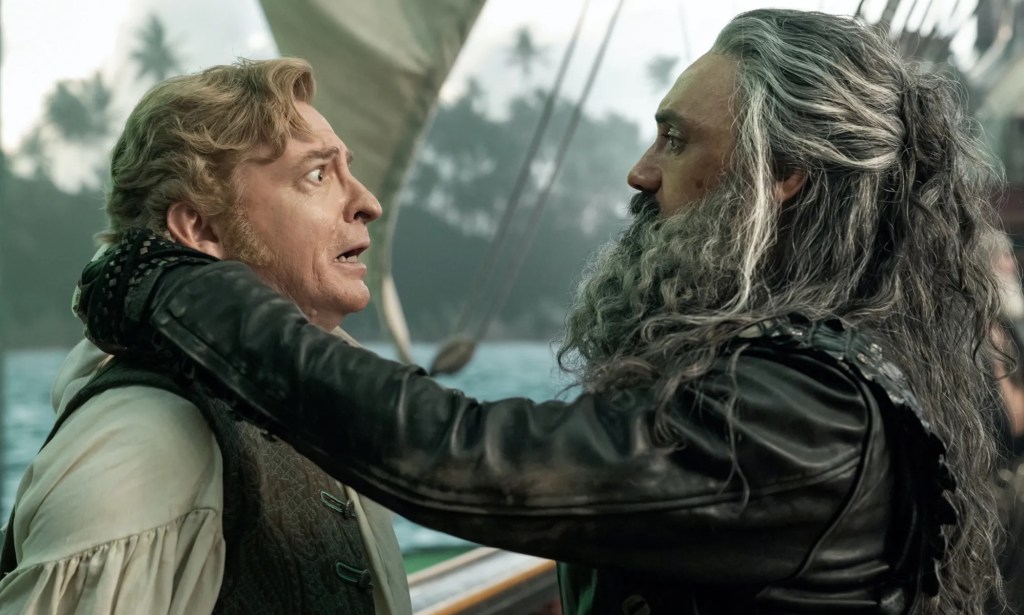Was Blackbeard queer? The surprising true story behind hit pirate comedy Our Flag Means Death

Blackbeard and Stede Bonnet kiss in Our Flag Means Death. (HBO)
Although hit TV rom-com Our Flag Means Death focuses on the more silly side of piracy, you might be surprised to hear that much of the show is actually based in truth.
Most viewers had likely heard of the “dread pirate” Blackbeard before tuning in, but Taika Waititi’s take on the infamous captain isn’t the only character based on a real person. Stede Bonnet, Spanish Jackie, Israel “Izzy” Hands and Calico Jack are all historical figures that sailed the high seas, as well as season two additions Zheng Yi Sao, Captain Hornigold, Mary Read and Anne Bonny.
Creator David Jenkins obviously took liberties while rewriting Blackbeard and Stede Bonnet’s swashbuckling adventures into a sweeping LGBTQ+ romance, but did they actually fall in love in real life?
Who was Stede Bonnet?

Much like in the show, the real Stede Bonnet was a wealthy landowner from Barbados and did in fact leave his wife and kids for a life at sea on his ship, the Revenge, upon which he employed a paid crew. He’s even cited in Charles Johnson’s ‘A General History of the Pyrates’ as leaving because of the “discomforts he found in a married state”.
Stede Bonnet only lasted around a year in his new life as a buccaneer before his death (he was put on trial and hanged for piracy in December 1718), but that was clearly enough time to form an unlikely relationship with one of the most fearsome pirates that ever lived.
It was during a stop-off at the Republic of Pirates in Nassau in September 1717 where Bonnet first met Edward Teach, better known as Blackbeard.

Their meeting played out much in the same way as it does in Our Flag Means Death, with Bonnet injured after a run-in with the Spanish, and Blackbeard taking over the Revenge while Bonnet’s wounds healed. The pair sailed together for three months before they abruptly parted ways. They didn’t see each other again until the spring of the following year, when they shared a few more adventures both at sea and on land.
The reunion eventually ended with Bonnet’s crew deserting him for Blackbeard, Blackbeard marooning the crew on an island, and Bonnet going back to rescue them.
If that doesn’t sound like an ocean fling ending in a bad break-up then we don’t know what does.
What, exactly, was “matelotage”?
Many historians aren’t fully convinced by the theory that Blackbeard and Stede Bonnet were romantically involved, but there’s still some evidence that could back up the claim that Blackbeard may have been queer.
Intimate partnerships between male sailors weren’t uncommon during Blackbeard’s time. Buccaneers hailing from Europe would even often enter into “matelotage” – an agreement that two people would share their incomes and inherit their partner’s property if they died.
The relationships between matelots – the root of the word ‘matey’ – are sometimes thought to have been purely platonic, but there’s actually no reason to believe that matelotage wasn’t more like domestic partnership or same-sex marriage.

With the general lack of women at sea and the fact that men would sometimes spend months at a time together on ships, many historians, like B. R. Burg in his book ‘Sodomy and the Pirate Tradition’, have drawn conclusions about other activities some of these matelots might have been up to.
Sexual relations between male sailors were of course generally looked down upon by land-dwelling folk (French governor Jean Le Vasseur even tried to have 2,000 female sex workers shipped from France to the Caribbean in an attempt to stop them), but pirates not just accepted but encouraged them.
So does that mean Blackbeard and Stede Bonnet were queer? Although Blackbeard eventually married a woman – Mary Ormond of North Carolina – shortly before his death in 1718 (rebound, anyone?), the short answer to the question is: maybe. There’s no solid evidence either way. But as far as the Our Flag Means Death viewers are concerned, Blackbeard’s an LGBTQ+ icon.
Our Flag Means Death is available to stream on Max now.

